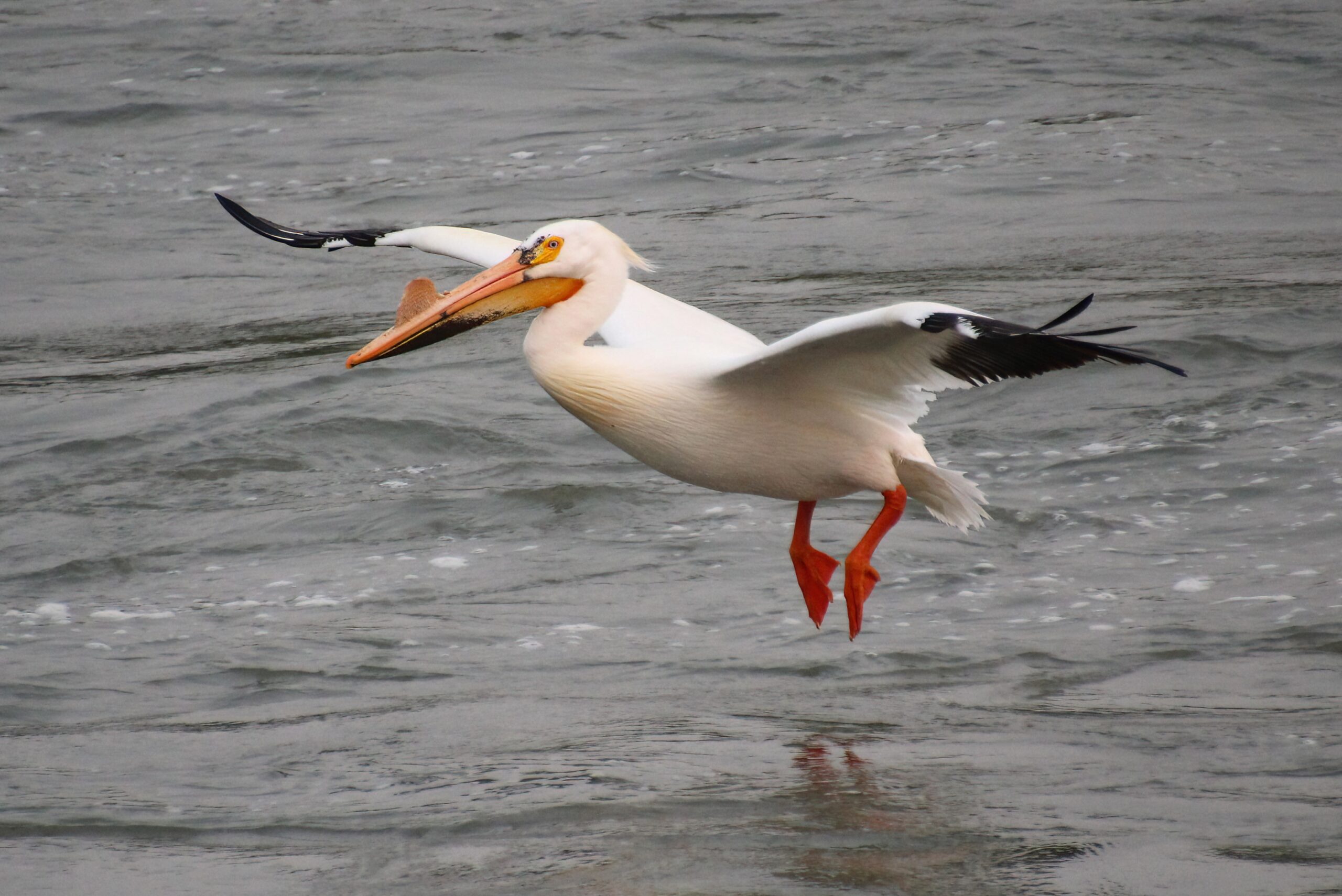Of all birds and wildfowl, perhaps the American White Pelican best demonstrates a natural understanding of physics. In high school I had no idea what physics even was, but have come to appreciate its application. Seeing pelicans in many locations such as Cold Lake Provincial Park, Weed Lake, the Bow River upstream of the Carseland Weir, and Rochon Sands Provincial Park, it is a marvel to watch them glide effortlessly just inches above the water surface. These lengthy glides seem never to end. No wing beat is pronounced but they are slow and methodical, save minor adjustments where an increase in altitude is helpful. Seeing nearly 20 pounds of airborne weight move with the grace of Ginger Rogers and Gene Kelly, well it seems to defy science.
The American White Pelican is one of our heaviest birds, with the wingspan of a mature pelican reaching 9.5 feet. Consider the following: Slow wing beats. A heavy weight. Lengthy wings. Indeed what do pelicans “understand” that truly aids in their incredible success in flight?
Fortunately scientists at Loyola University in New Orleans and at the Biomimicry Institute pondered this question, making some informative discoveries. Fundamentally, birds intuitively connect the efficiency of movement as having physiological value: If one flies with less effort, less food and less time to catch food is required. Without attending a lecture, using a calculator, or opening a textbook pelicans understand and apply a physics concept called compression gliding also known as the ground effect. Essentially as pelicans come within the distance of its wingspan of water over which it is gliding, the ground effect increases the efficiency of the glide. The relative wing length to wing width ratio determines that efficiency. During the glide, air is “funneled” between the lower surfaces of the wings and the water surface, effectively compressing the air. Some of this compressed air washes downward, which pushes the wings and bird upward. This compressed air acts like a cushion of dense air which supports the bird in its glide. Near the wingtips, higher pressure air pushes up into regions of less pressure, creating vortices that create drag. The closer the pelican is to the surface of a river or lake, the more positive impact is evident in the compression glide as both vortices and downwash are reduced. The flatter or more calm the water acts to increase the flight efficiency. When pelicans land the ground effect slows their flight, permitting its landing gear to contact the lake or river.
Compression gliding was used by long-range bomber pilots in WWII in order to save fuel by flying at a low altitude. Inexperienced pilots have been surprised by being buoyed upward once their plane is less than a wing length from the ground on landing. Imagine applying the knowledge of the pelican to increase human flight efficiency and decrease greenhouse gas emissions. Humans can learn much from other species with whom we must truly share our one planet.
This Pelican Understands Physics

In response to Canada's Online News Act and Meta (Facebook and Instagram) removing access to Canada's local news from their platforms, Anchor Media Inc encourages you to get your news directly from your trusted source by bookmarking this site and downloading the Rogue Radio App. Send your news tips, story ideas, pictures, and videos to info@anchormedia.ca.



